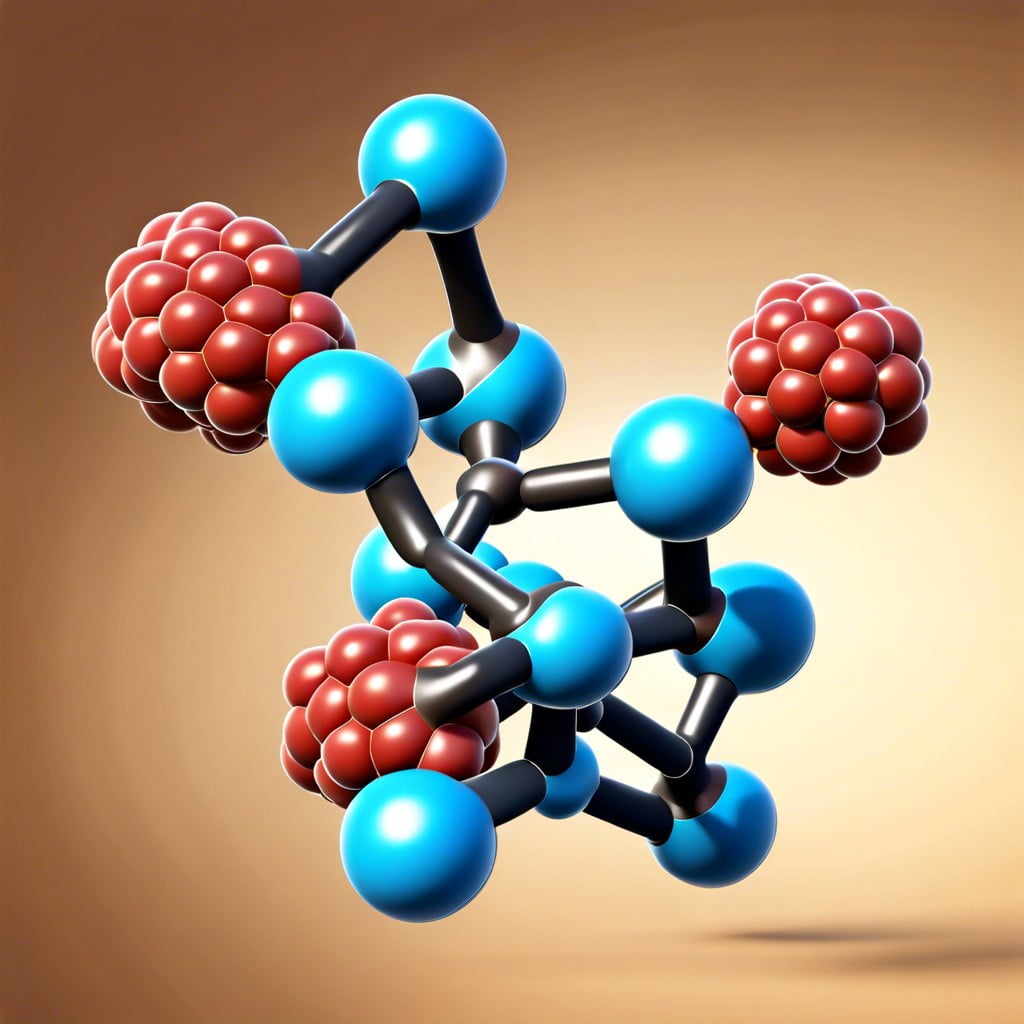In this article, you will learn that a polymer composed of three sugar molecules is called an oligosaccharide.
Key takeaways:
- Oligosaccharides are carbohydrates consisting of a small number of monosaccharide units.
- Trisaccharides are a specific type of oligosaccharides, composed of three sugar molecules linked together.
- Trisaccharides have diverse functions, including serving as an energy source and promoting digestive health.
- Common types of trisaccharides include raffinose, maltotriose, and melezitose.
- Trisaccharides play important roles in energy metabolism, cell recognition, and overall organismal function.
Definition of Oligosaccharides

Oligosaccharides are carbohydrates that consist of a small number of monosaccharide units, typically ranging from two to ten. These units are linked together by glycosidic bonds, which are formed through a dehydration reaction that bonds one monosaccharide to another.
Unlike polysaccharides, which have many sugar units and can be quite complex, oligosaccharides have a simpler structure due to their shorter chains. This category of sugars can be found naturally in various foods, including fruits, vegetables, and grains.
They serve diverse functions in biological systems, from providing energy to participating in cell recognition processes. Oligosaccharides are also prebiotics, meaning they promote the growth of beneficial bacteria in the gut, contributing to digestive health.
Trisaccharides As a Type of Oligosaccharides
Oligosaccharides are carbohydrates composed of a small number of monosaccharide units. Among them, trisaccharides are a specific category that consists precisely of three sugar molecules linked together. They are formed when three monosaccharides undergo a dehydration reaction, leading to the release of water molecules and the creation of glycosidic bonds. These glycosidic bonds can be of various types, depending on the orientation of the linked sugars, and this affects the properties of the trisaccharide.
Despite being less well-known than simple sugars like glucose or complex carbohydrates like starch, trisaccharides are abundant in various natural sources including plants, where they serve as storage or structural components. Moreover, they are not only crucial in plant life but also play significant roles in the human diet, contributing to the flavor and nutritional profiles of many foods.
Given their unique structure, trisaccharides exhibit diverse functions, from providing energy to serving as building blocks for other important biological molecules. Furthermore, the way trisaccharides are digested and metabolized can vary, with some being readily broken down and others resisting digestion, thereby influencing gut health and the microbiome.
Common Types of Trisaccharides
Raffinose is one such compound, abundant in beans, whole grains, and some vegetables. It serves as an energy source and may influence digestive health due to its role as a prebiotic.
Maltotriose, primarily found in malted foods and beverages, arises from starch breakdown. It contributes to the flavor profile of beers and malted products and also serves as an energy source.
Melezitose, which is less commonly encountered, is created by certain plants and insects. Its presence is especially notable in some honeys.
These molecules exhibit diverse properties and functions, illustrating the versatility of trisaccharides in both natural and industrial contexts.
Functional Roles of Trisaccharides
Trisaccharides serve diverse purposes, crossing the bridge between nutrition and biological signaling:
- Energy Source: These sugar molecules are excellent energy reserves. Once ingested, enzymes break them down into monosaccharides, which cells use as fuel.
- Digestive Health: Some trisaccharides act as prebiotics, stimulating the growth of beneficial gut bacteria, which in turn aids in digestion and overall gut health.
- Cell Recognition: On cell surfaces, trisaccharides can be involved in cell-to-cell recognition and adhesion processes, playing a critical role in immune responses and tissue formation.
- Sweetening Agent: In the food industry, these compounds can be used to sweeten products, providing a specific flavor profile that’s less intense than simple sugars.
Their ability to participate in various biochemical processes makes trisaccharides indispensable components in both dietary and physiological contexts.
Biological Importance of Trisaccharides
Trisaccharides serve as crucial energy sources, providing cells with the fuel needed for metabolism. They also play a role in cell signaling and recognition, promoting communication between cells and their external environments.
In human nutrition, they contribute to the dietary fiber content of various foods, aiding in digestive health. Moreover, these sugars act as building blocks for more complex carbohydrates necessary for structural integrity in plants and protective mucous barriers in animals.
Understanding the biological significance of trisaccharides is fundamental to appreciating how structures at the microscopic level impact overall organismal function and health.
Recap




